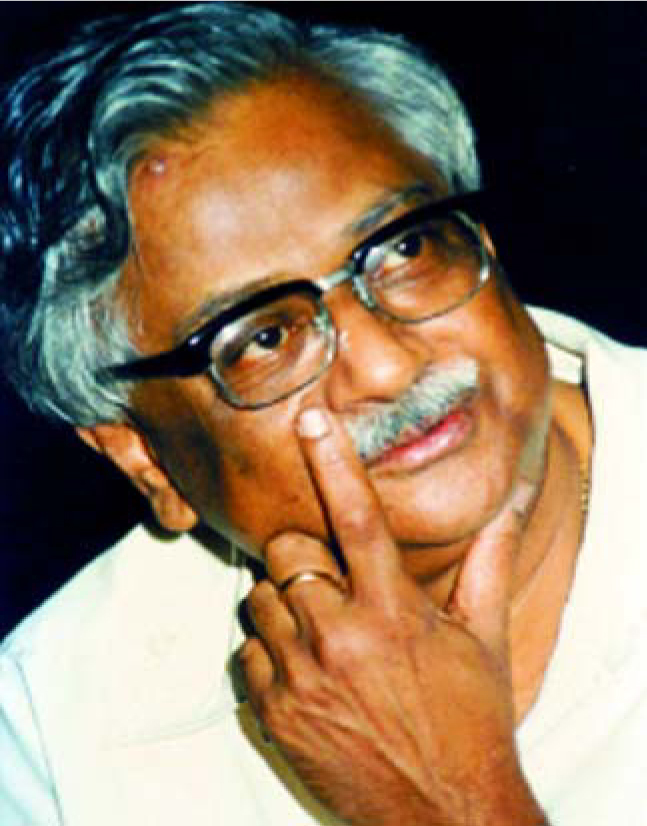Raja Ramanna
DOI: 10.1063/1.2012481
On 24 September 2004, with the death of Raja Ramanna following cardiac arrest in Mumbai, India, one more star disappeared from India’s scientific sky. To most of the country’s citizens, Ramanna was the father of India’s test nuclear explosion in the Rajasthan desert on 18 May 1974. But he was much more than that. Raja, as he was known to his close friends, was a multifaceted personality—an eminent scientist, an able administrator, a gifted musician, a scholar of Sanskrit literature and philosophy, and above all a complete human being.
Born on 28 January 1925 in Tumkur, a town in southern India, Ramanna received his early education in Mysore and Bangalore. After obtaining his BSc in physics with honors from Madras Christian College in Chennai, India, he proceeded to King’s College London for graduate studies in nuclear physics. In 1948 he obtained his PhD, under F. C. Champion, for work on the design and fabrication of a modified ionization chamber for studying angular distribution of ionizing particles.
The following year, Ramanna returned to India to join the Tata Institute of Fundamental Research in Bombay. As a young member of the team under Homi Jehangir Bhabha, the architect of India’s nuclear program, he was a leader in organizing the physics program at the Atomic Energy Establishment, Trombay (now the Bhabha Atomic Research Centre, or BARC).
His early investigations involved neutron thermalization in several moderating assemblies as a part of the studies relating to the design and construction of India’s first research reactor, Apsara. Once commissioned, Apsara made intense thermal neutron beams available for basic research, thus prompting Ramanna to initiate a program of experimental investigations of thermal neutron-induced fission of uranium-235. As a result, the Trombay fission group was created and became internationally recognized for its high-quality investigations, despite meager resources, and use of indigenously designed and fabricated equipment.
Ramanna’s most important contribution to fission theory, however, is his stochastic theory of fragment mass and charge distributions in fission. The theory, which is based on the model of a random exchange of nucleons between two nascent fission fragments before scission, explains most of the observed features of fragment mass and charge distributions in low-energy fission and the features’ dependence on the excitation energy of the fissioning nucleus. Direct experimental evidence for nucleon exchanges between nuclei in close proximity would come much later, though, with the advent of heavy-ion accelerators and studies of nuclear collisions at near-barrier energies.
Under Ramanna’s leadership, the Trombay fission group discovered not only that shell effects vanish with excitation energy, but also what consequences that disappearance has on the production of super-heavy nuclei through heavy-ion fusion reactions. The necessity of producing cool compound nuclei as a precursor to super-heavy element production is still recognized even today. Another novel contribution of Ramanna’s was a geometrical interpretation of atomic and nuclear binding energies.
India’s first nuclear test, in 1974, is undoubtedly a moment of great achievement for Ramanna and his associates at BARC. While the credit for the success of the test goes to many spread over several institutions, it was at BARC where all the design and development work had been done under the direct leadership of Ramanna.
Ramanna’s influence on India’s nuclear program carried over into the area of human resource development. He singularly contributed to the creation in 1958 of the Atomic Energy Training School of what was then the Atomic Energy Establishment, Trombay. Under the leadership of Ramanna, the school trained staff in multiple disciplines for the country’s nuclear establishment. Apart from the nuclear program, he was involved in the development of several higher institutions of learning and research in India.
Ramanna occupied many prestigious positions in the Indian government and shaped its programs. He was scientific adviser to India’s defense minister (1978–82) and chairman of the country’s Atomic Energy Commission (1983–87). As the chief of defense research and secretary for defense research, Ramanna made important contributions to India’s efforts to design and manufacture its own defense equipment. He also had a brief stint in 1990 as minister of state for defense in the government’s Union Cabinet.
Ramanna’s death is indeed a loss to India, particularly to the Indian scientific community.


More about the Authors
Valangiman Subramanian Ramamurthy. Government of India, Department of Science and Technology, New Delhi.
